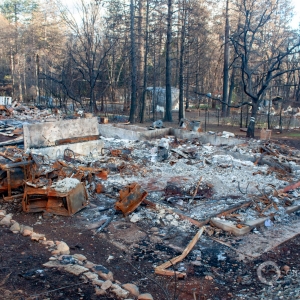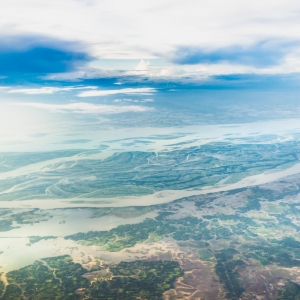The Stream, December 18, 2020: Study Estimate Over A Million Barriers in European Rivers
GLOBAL DAILY WATER NEWS
- A new study finds that barriers to rivers in Europe could be two times as more common than previously thought.
- A joint report from several state agencies in Wisconsin details plans to address PFAS contamination.
- Volunteer pilots are delivering emergency aid to communities stranded by recent flooding in Guatemala.
- The Iowa Supreme Court is deliberating whether to hear a case over potential drinking water pollution.
Washington D.C. will take part in a national study to test for Covid-19 in wastewater.
“The goal is to have a broad but also diverse cross section of the national population getting sampled so that health officials can look for signs of any COVID-19 spikes before there is community spread and the virus infects others.” – DC Water, Washington D.C.’s water and sewer authority. DC Water has announced that they will be participating in a national study being led by the U.S. Department of Health and Human Services that will collect samples from wastewater treatment facilities to find potential Covid-19 hotspots. DCist reports that similar efforts to test wastewater for the coronavirus are underway in the state of Maryland and at dozens of American colleges. While there have been no confirmed cases of human waste transmitting the virus, wastewater can be tested for viral RNA and serve as an early warning sign for outbreaks.
In context: Enthusiasm But Obstacles in Using Sewage to Monitor Coronavirus
IN RECENT WATER NEWS
Plastic Pipes A Water Contamination Risk After Fire, Data Shows
Wildfires in California have been brutal in recent years, not only torching millions of acres of forest but also blazing through developed areas with vicious force.
Because these fires are now burning where people live — or, people are living where the fires are — new hazards to health and infrastructure have emerged in the ashes. Among them is the contamination of drinking water, which occurred after catastrophic fires in Santa Rosa, in 2017, and in Paradise a year later. Chemical contaminants such as benzene, a carcinogen that affects blood and bone marrow, were also found in community water systems in Santa Cruz County this year following the CZU Lightning Complex Fire.
CDC Estimates Costs of Waterborne Pathogens in the United States
Contaminated water is making U.S. residents sick — millions of them each year.
Though this tally includes summertime nuisances like swimmer’s ear, the most costly and deadliest risks are the microbes that grow within building plumbing or in rivers and lakes, according to a study from the federal government’s top health agency.
In Case You Missed It:
Dry Land and Rearing Cattle – Severe drought in Texas has led to the destruction of thousands of farms and ranches in the state.
Colorado River Indian Tribes Take Another Step Toward Marketing Value Water in Arizona – The tribes unveiled draft legislation to allow their water to be leased to users in Arizona off the reservation or stored underground.
Wisconsin Releases Detailed Plan To Address PFAS Contamination
A council of state agencies directed by the Wisconsin Department of Natural Resources (DNR) released a plan of 25 action items to address PFAS concerns in Wisconsin. The report, released Wednesday, was developed with public input and focuses on environmental justice, health equity, innovation and pollution prevention, Wisconsin Public Radio reports. Officials did not provide specific details on how much the plan would cost to implement, but the DNR anticipates roughly $750,000 would be spent to test all public drinking water systems state. Other action items included in the report include minimizing PFAS discharges to wastewater though sampling and developing an interactive map and database of PFAS sites.
In context: Who Pays? PFAS Lawsuits, Legislation Raise Questions of Pollution Liability
TODAY’S TOP WATER STORIES, TOLD IN NUMBERS
234 STRANDED COMMUNITIES
Close to 100 volunteer pilots from Aeroclub de Guatemala have flown more than 600 hours since November in order to deliver emergency aid to an estimated 234 Guatemalan communities stranded due to recent flooding. Jorge Castellanos Peleaz, the president of Aeroclub de Guatemala, told Al Jazeera that he believes that there are many tens of thousands of people who are stranded with no access to food, water or supplies. Over a month after the emergency aid began, the pilots have perfected their delivery system. Now, as donations of supplies are slowing down and focus shifts to other issues, the future for aid is uncertain.
1 MILLION+ BARRIERS
A new study in Nature estimates that there are at least 1.2 million barriers to free flow on rivers in 36 European countries, threatening biodiversity across the continent. Scientists from across Europe found nearly two times as many barriers than previously thought, including dams, fords and bridges. The study’s authors noted that small barriers such as weirs and sluices often pose a much more insidious threat to river ecosystems than larger barriers like hydroelectric dams. The study, Phys.org reports, demonstrates the extent to which human activity has influenced river ecosystems.
ON THE RADAR
The Iowa Supreme Court heard arguments on Wednesday on whether to allow a lawsuit claiming lawmakers and state officials, in permitting nearly unlimited expansion of hog farms and few restrictions on pollution from crop farms, have denied citizens safe water for drinking and recreation. The lawsuit, filed in March 2019, argues that pollution from hog and crop farmers has polluted clean water in part of the Raccoon River, a primary drinking water source for about 500,000 central Iowa customers of Des Moines Water Works. A decision on whether the case will go to trial won’t likely come for a few more months, the Associated Press reports.
In context:
- One Michigan County Tells the Story of a Nation Plagued By Water Pollution
- Des Moines River ‘Essentially Unusable’ for Drinking Water due to Algae Toxins
Jane is a Communications Associate for Circle of Blue. She writes The Stream and has covered domestic and international water issues for Circle of Blue. She is a recent graduate of Grand Valley State University, where she studied Multimedia Journalism and Women, Gender and Sexuality Studies. During her time at Grand Valley, she was the host of the Community Service Learning Center podcast Be the Change. Currently based in Grand Rapids, Michigan, Jane enjoys listening to music, reading and spending time outdoors.






Leave a Reply
Want to join the discussion?Feel free to contribute!